The Chinese consume an average of 19.6 kg of pork and 11.4 kg of aquatic products a year. The per capita aquatic consumption ranks second in meat consumption, which is comparable to the total consumption of beef, mutton and poultry. According to a report released by the Food and Agriculture Organization of the United Nations in 2018, global consumption of 150 million tons of aquatic products accounts for 38% of China's consumption, more than the sum of the other five continents. As a major global consumer of aquatic products, what is the Chinese perception of fisheries and aquatic products? GoalBlue, an environmental charity, has undertaken further research on this topic.
China's fishery problem is imminent, and almost no fish have been caught offshore. If the current state of overall degradation of marine fisheries resources continues, the ocean as an ecosystem covering more than two-thirds of the Earth's surface may soon become a lifeless place.
In view of this, as an environmental protection public welfare institution promoting sustainable consumption, GoalBlue has joined hands with professional research institutions to conduct a survey on the consumption habits of sustainable fisheries in first-tier cities in mainland China, with the goal of finding target consumers to support this industry. The survey aimed to investigate the awareness of fishery issues, aquatic consumption habits, willingness to support sustainable aquatic products, the media contact habits of the people who are most willing to support sustainable aquatic products and the target population and find gaps in consumers’ knowledge. This research report will contribute to the sustainable development of China's fisheries, aiming to quickly resolve China's fisheries problems and protect the blue ocean and ecological environment.
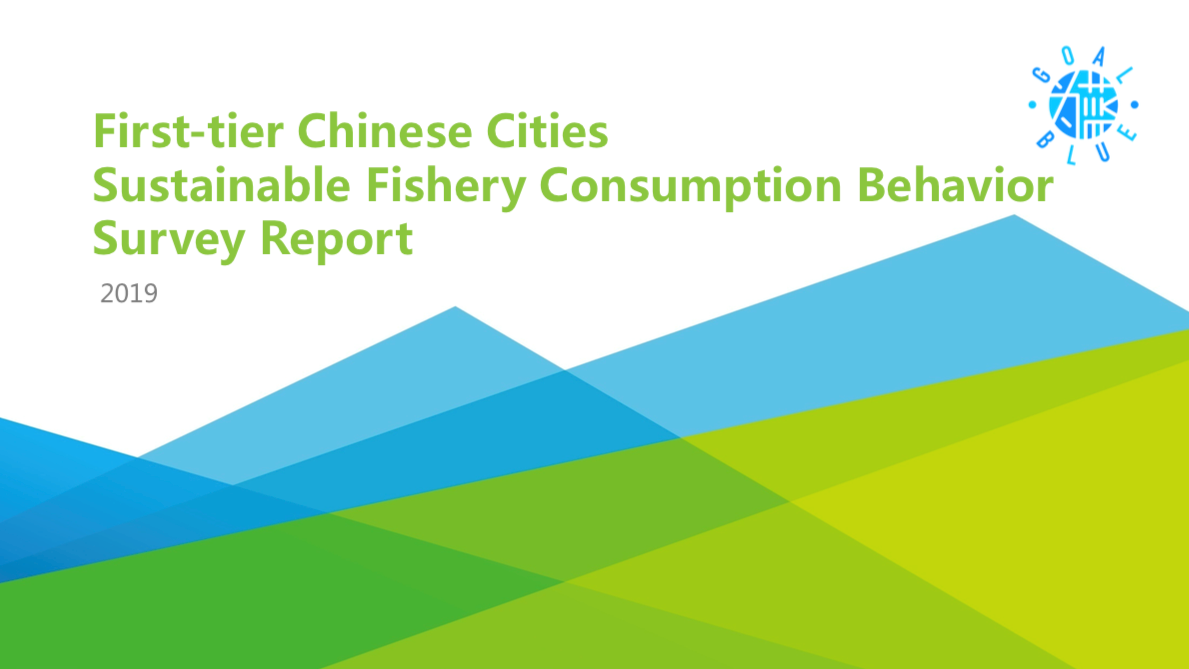
The following is an excerpt from the contents of the survey Report:
At present, consumers have little understanding of the proportion of capture fisheries and aquaculture fisheries in Chinese fisheries. Consumers believe that capture fisheries account for 47.7% of fisheries in China, when in fact they account for 23.9% of the total; the proportion of aquaculture is believed to be 52.3%, and the actual proportion is 76.1%. A large proportion of consumers do not understand the current development of fisheries and the consumption of natural resources.
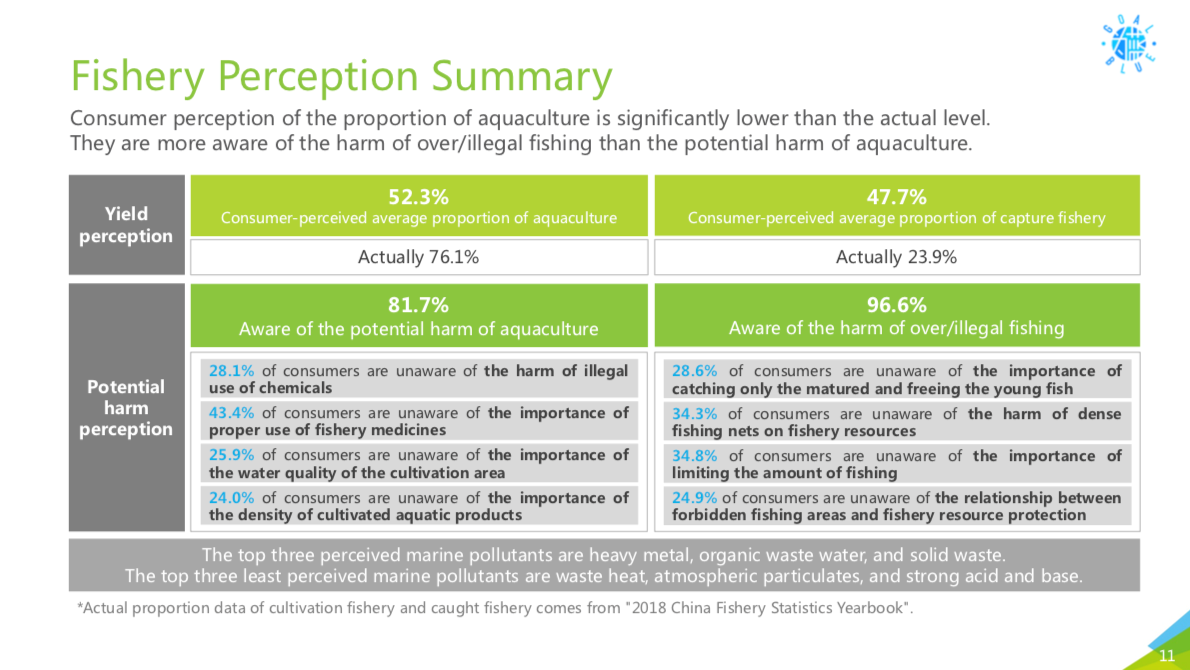
Aquaculture consumers spend more than 101-300 yuan on a single purchase, 1-3 times a week. Among them, nearly 60% of consumers choose to buy ingredients to cook at home, and about 40% of consumers are accustomed to enjoying aquatic meals in restaurants. Over 60% of consumers purchase aquatic products and services offline.
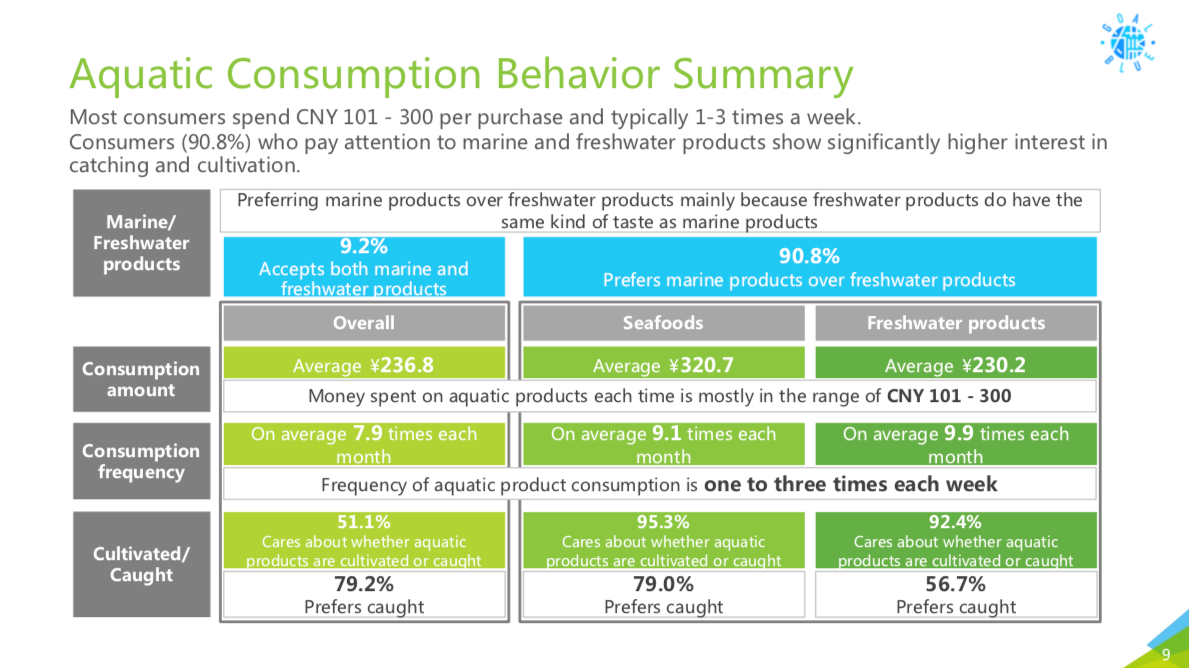
94.4% of users are willing to give priority to sustainable fishery products, and over 80% of users are willing to pay a premium of less than 30%.
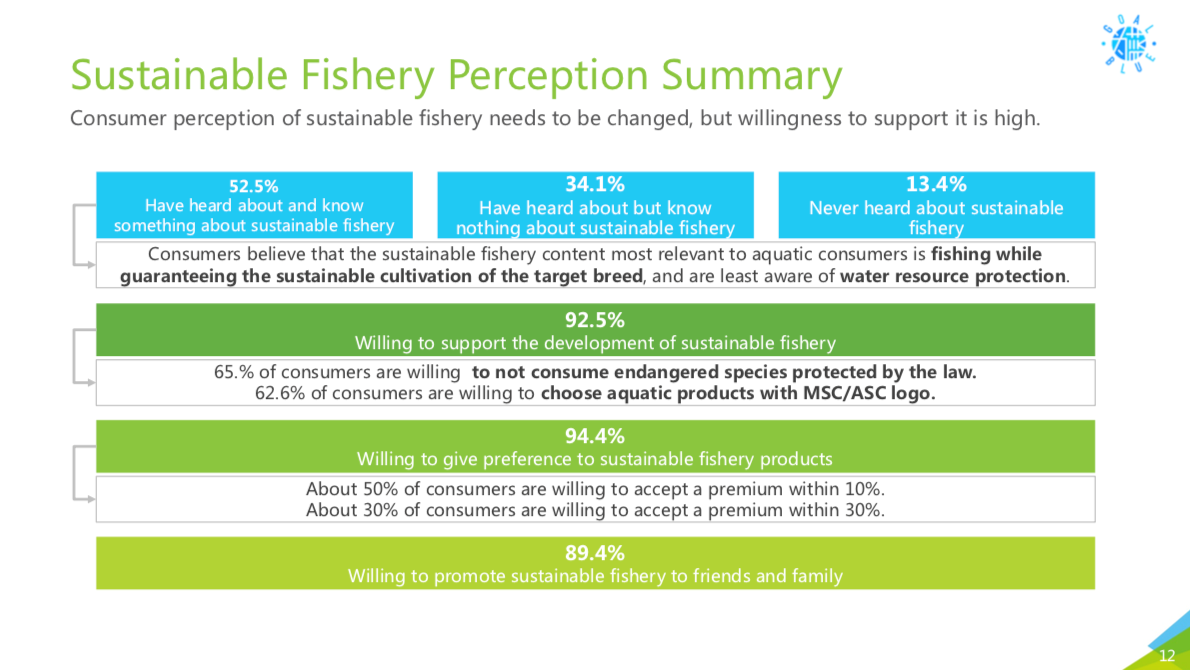
The groups most willing to support sustainable fishery aquatic products are: women, young people (18-35 years old), highly educated people (undergraduate and above), people who are married with children and children in early school age, people employed in real estate construction and trade and the citizens of Hangzhou, Beijing and Shenzhen.
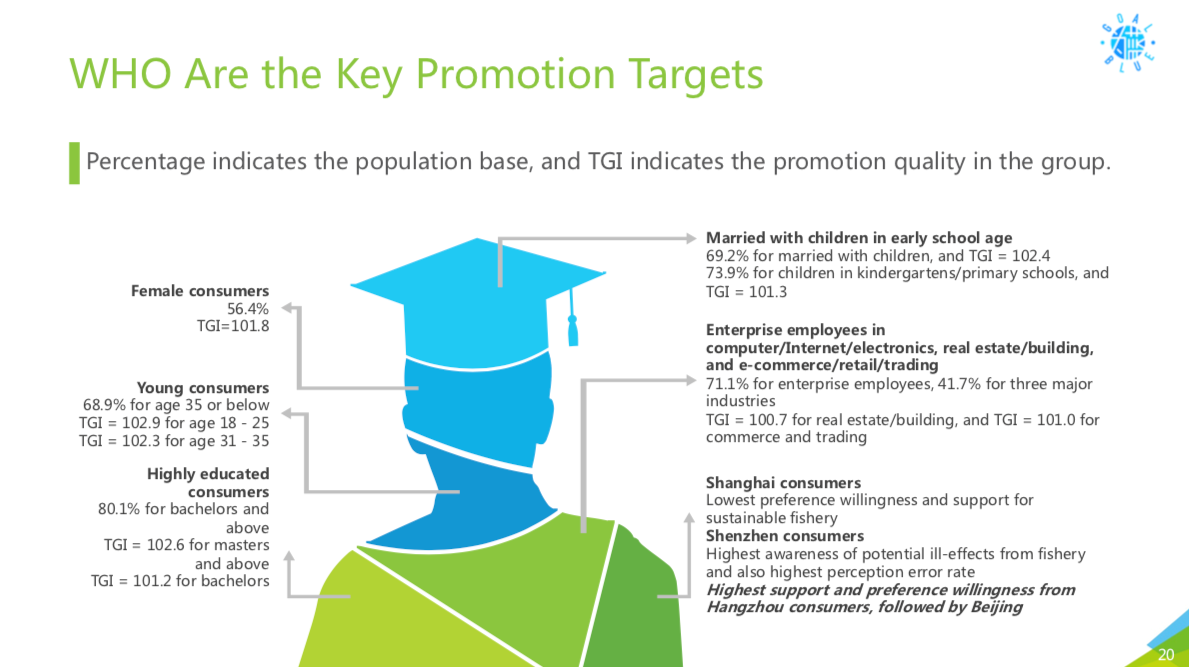
The survey found that although consumers have little knowledge of China's fisheries issues, most consumers believe that unsustainable fisheries can harm ecological environments such as the ocean and are highly willing to support the development of sustainable fisheries. If the potential hazards of the sustainable fishery can be emphasized, the protection of water resources is highlighted and sustainable products are promoted and provided in a manner that is easily accepted by the target audience, it is believed that all stakeholders in the industry would benefit.
Use your own wallet to vote for the life you want, each consumer's choice will determine the fate of the ocean and our future.
This report provides direct access to current, scientific information allowing consumers who care about the environment to find channels to share their environmental insights and express their willingness to support environmental protection. For those in the fishery industry, this report provides information about target consumers and their consumption drivers. In this way, fishery companies could provide high-quality products and services that are more in line with consumer demand. For public welfare organizations such as GoalBlue, this report highlights the gaps in the target audience’s knowledge when conducting public welfare advocacy which allows for more effective communication. Furthermore, it creates better links between the public and sustainable products, sharing a platform for implementing sustainable lifestyles.
It is the long-term development path to choose sustainable aquatic products that have less impact on the environment and to develop under the premise of protecting the ecological environment and natural resources. As Chairman Xi said: lucid waters and lush mountains are invaluable assets.
Thanks to Blue Pioneers Program, ChinaBlue sustainability Institute, Duke Kunshan University and School of Oceanorgaphy in Shanghai Jiao Tong University for their support of the research report.
Some of the above data sources
1. The State of World Fisheries and Aquaculture (2018) by FAO
2. China Statistical Yearbook (2017)
3. Chinese Fisheries Statistical Yearbook (2017)
4. China Seafood Imports & Exports Statistical Yearbook (2016)
5. ChinaBlue sustainability Institute